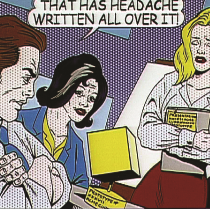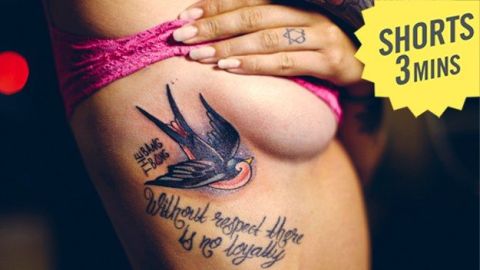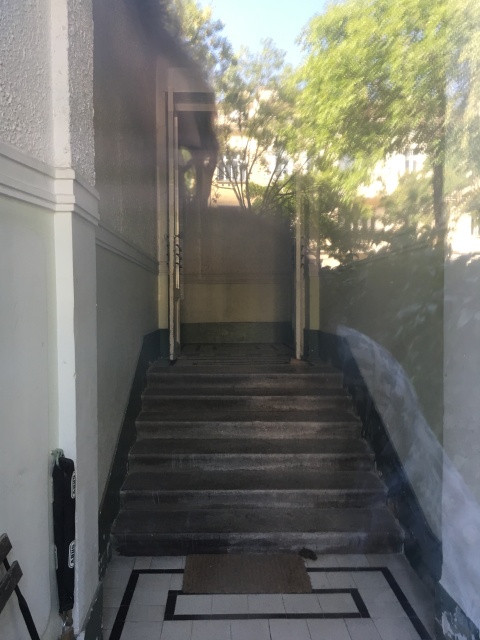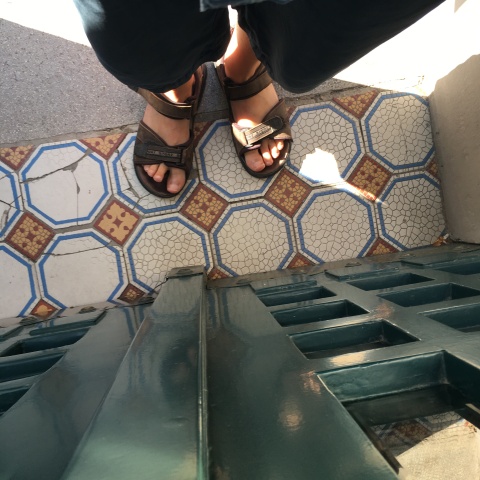Archive for April, 2018|Monthly archive page
The Schoolgirl who caught a Cab to Oblivion
This article about my latest documentary commission for Real Stories channel appeared in yesterday’s The Observer newspaper. It was written by journalist Martin Bright who features in the film.

Two years ago I was contacted out of the blue by a retired police officer who asked if I remembered the case of Ruth Wilson, a 16-year-old girl who had gone missing from Dorking, Surrey, in November 1995. I told him that of course I remembered – it was one of the most peculiar stories I had covered as a journalist.
Ruth had left home as usual on a miserable winter morning, but instead of going to school, had taken a cab in the pouring rain to the top of bleak but beautiful Box Hill, where she vanished off the face of the earth. A good girl from a good family, Ruth has never been heard of since and no body has been found.
I first wrote about the case in the Observer more than 15 years ago and it has haunted me ever since.
In 2002 I concluded that the circumstances of the Ruth Wilson case were perhaps just too odd to become the focus of a media campaign. There had been some attempts to use her family to draw attention to the case, but they were not keen on publicity. Over the years there was a series of further appeals, but even in Surrey the Ruth Wilson story just faded away.
And it would have remained in obscurity were it not for Liam McAuley, a 58-year-old retired police officer from Northern Ireland, who came across the story in a local paper when he moved to Dorking in the mid-1990s. “Nobody can actually just vanish,” he told me. “I think something terrible has happened to her. Somebody knows where she is.”
McAuley made a freedom of information request to the police to ask for details of the interviews carried out after the disappearance. He was told the case was still ongoing and he could not have the documents he had requested.
He wrote to Ruth’s parents, Ian and Karen, who still lived in the village of Betchworth, near Dorking, but received no reply. In his frustration he contacted me as the last journalist to write extensively about her. His tenacity has led to the making of a documentary, The Vanished, released this weekend.
The circumstances of Ruth Wilson’s disappearance had always left me uneasy. Why had this studious, church-going, bell-ringing, choir-singing, organ-playing young woman suddenly decided to make a new life for herself?
In the intervening years, I had discovered something about the Wilson family they had chosen to hide from me at the time. Karen Wilson, introduced to me as Ruth and her sister Jenny’s mother, was in fact their stepmother. Their birth mother, Nesta, had died in tragic circumstances when Ruth was a toddler and Jenny still a baby. Why hadn’t they told me this? Was this really such a happy family? And did the death of her mother have anything to do with Ruth running away?
When we started making the documentary Ian Wilson got back to me saying he and the family didn’t want to participate, although he trusted us to do “a professional job”.
With the family refusing to speak, we decided to contact Ruth’s friends. We knew she had recently split up with her boyfriend, Will, and I managed to track him down to the south coast. Will, who does not want to be identified, explained that Ruth was a troubled teenager. She was unhappy at home. Will confirmed that her mother had died. The story he had heard was that she had fallen downstairs and broken her neck.
Following an appeal in the local newspaper, other friends came forward. Roxy Birch, a schoolfriend who played Ruth in an early reconstruction of the disappearance, told me: “She couldn’t drive, as far as I am aware, she didn’t have a passport… So, you have to ask yourself the question, where could she have disappeared to for 22 years?” Kay Blenard, another schoolfriend, said: “My belief is that she had planned to do something. I don’t know whether that would be permanent or temporary. I’d also like to believe that someone knows what happened.”
Nesta Wilson’s death certificate showed that the story of the accident on the stairs was not correct. The awful truth is that Ruth’s mother committed suicide: she hanged herself just before Christmas in 1982, when Ruth was four and her sister a few months old.
Just after receiving this grim information, I was contacted by another of Ruth’s friends. Catherine Mair grew up close to her in the sixth form of The Ashcombe School. Crucially, Catherine revealed that Ruth had found out about her mother’s suicide just before she disappeared. She was devastated. “Ruth was really troubled,” she said. “She had so much going on in her head that she was desperately trying to find out who she was. ”
We put this to the Wilsons and they issued a response. “Her family are extremely hurt by this statement and do not recognise this view of Ruth’s childhood,” they said. “Ruth always knew about her biological mother’s death, but not the exact cause. Sadly, we now know that before her disappearance, Ruth had discovered the tragic circumstances of her mother’s death, but equally sadly, she chose not to discuss or question this with any family members.”
Jon Savell, the chief superintendent, public protection, at Surrey police, carried out the latest review. “There are five explanations for Ruth Wilson’s disappearance,” he said. “A tragic accident, abduction, suicide, murder, or that she had absented herself to start a new life.” I asked him whether the police had known about Ruth’s unsettled home life and her birth mother’s suicide. He confirmed that they had indeed known about the family background, but chose not to make it public in case it coloured the testimony of any witnesses who came forward. So it was that the narrative developed of the perfect middle-class home and an inexplicable disappearance.
There are so many unanswered questions. Why did Ruth send her stepmother flowers to arrive two days after her disappearance? Where is her mother’s family and why did they not come forward? And why, if she ran away, has she never made contact with her family and friends?
Someone knows what happened to Ruth. And secrets have a tendency to come out in the end.
Vanished: The Surrey Schoolgirl can be seen on the Real Stories YouTube channel
Not the Usual Suspects

Social Media Addicts Anonymous
Carol Nahra interviewed me last week for her documentary film-making blog Docs on Screens
Carol is an American journalist and documentary producer, who since moving to London in 1996 has worked as a producer, and as a consultant & writer for Sheffield Doc/Fest. She also teaches documentary film and digital media for Syracuse University’s London program and the Foundation for International Education. She regularly moderates Q&As and special events at London documentary screenings.
Taster of the interview
Little Dot’s Adam Gee: “I have made a real effort not to commission the usual suspects.”
In more than a decade at Channel 4 heading up factual multiplatform content, Adam Gee commissioned many multi-award winning productions, including Embarrassing Bodies and the Big Fish Fight. After a stint launching All 4’s short form video service, he is now commissioning for Little Dot Studios, who have earned astonishing viewing numbers with their flagship Real Stories documentary channel. A regular guest speaker for my digital engagement class, Adam excels at spotting trends and keeping ahead of the game in a dizzying, fast-changing media landscape. I chatted with him about his work finding new pathways for documentary filmmakers.
Carol Nahra: Can you tell me about your role at Little Dot?
Adam Gee: I was brought in last summer to commission the first original content for Little Dot’s Real Stories, their documentary channel, which is the biggest of their portfolio of channels. It’s a very pure form of commissioning in that I was given a blank sheet, a pot of money and instructions to fill up the blank sheet with stuff that would fit properly onto the channel. So I set about basing the brief on the data underlying the channel. The data makes it really clear both who your audience is and what they actually like. This does not constrict your commissioning, it just shows where the most fertile territory lies.
CN: What kind of films do you commission?
AG: One of the things that characterises Real Stories is by and large they are uplifting and inspirational and have a feel-good vibe about them. And that is probably to some degree a product of the time – I think people are quite up for hearing things which are uplifting about humanity. So I commissioned eleven documentaries in the second half of 2017. I’ve just started on the next five. They are very varied subjects which range from restorative justice to proxy marriage to social media addiction and all things in between. They also range from traditional observational documentary to things that are much closer to the border of factual entertainment. And to some degree they have been done in the spirit of experimentation, to see what fits happily onto the channel which has been built up on acquisitions, what people find an easy transition to if they’re watching the 60 minute, relatively high budget documentaries which are the foundations of the channel.
CN: What don’t you commission?
AG: YouTube is the core online presence of Real Stories and there are certain subject areas which are vulnerable on YouTube to being demonetised or slapped with an 18 certificate – in other words, are vulnerable to being made invisible. So I was careful to stay a long way inland from those borders so the investment wasn’t at risk in that way. There are plenty of places you can go to make documentaries about ISIS or fetishes and this doesn’t need to be one of them. My favourite part of the brief is the slide that says what we don’t want at the moment. And that reads pretty much like my Channel 4 job description – sex, drugs and rock and roll. I’ve been there, done that, got the t-shirt and am happy to move on.
CN: Who have made the films?
AG: By and large these commissions have been done with small indies and individual filmmakers. I have made a real effort that they not be the usual suspects. So when I read down a list of the commissions to date, the first ones were directed by the founder of a new BAME-owned company (Andy Mundy Castle, Brittle Bone Rapper); a woman returner who’s coming back from a career break (Debbie Howard, Absent From Our Own Wedding); a woman who has been in Holloway prison twice for gang-related offences but is now on the straight and narrow (Nicole Stanbury, Sorry I Shot You).
A number are first-time commissions. Taken as a whole, they are quite a weird and wonderful bunch that are really talented and have delivered without exception. At a tight tariff like the UK online video one, if you’re not going to take a risk on emerging talent then, when will you ever?

Sorry I Shot You
FULL INTERVIEW can be read on Carol’s blog here
My earliest films on BFI Database

The Green Movie
While I’m making lists I thought I’d add this one. I stumbled across a British Film Institute database which has a list of my first dozen or so films as director, writer and/or producer. Some of these are fading from my memory so glad to be able to save them for easy reference here:
Filmography
- 2003 The Right Stuff (Director/Producer/Scriptwriter)
- 2000 E.asywriter (Co-Director/Producer/Scriptwriter)
- 1998 Live & Learn (Director/Producer/Scriptwriter)
- 1998 Sounding the Alarm (Director/Producer/Scriptwriter)
- 1997 The Red Movie (Director/Producer/Scriptwriter)
- 1997 MindGym: Fit Thinking for Fast Times (Director/Producer/Scriptwriter)
- 1996 Days of Change (Director/Producer/Scriptwriter)
- 1994 The Green Movie (Director/Producer/Scriptwriter)
- 1994 The Blue Movie (Director/Producer/Scriptwriter)
- 1994 TTT (Director/Producer/Scriptwriter)
- 1994 Conflict! (Director/Producer/Scriptwriter)
- 1994 Memories Are Made of This (Director/Producer/Scriptwriter)
- 1993 To Boldly Go (Director/Producer/Scriptwriter)
- 1993 Ideas into Action (Director/Producer/Scriptwriter)
- 1993 Budgeting Basics (Director/Producer/Scriptwriter)
- 1992 The Good Old Days (Director/Producer/Scriptwriter)
- 1992 The Best (Director/Producer/Co-Scriptwriter)

Live & Learn
My Short Form Video Commissions at Channel 4
This post is mainly for my convenience to refer to but might as well stick it here for posterity…

Tattoo Twists
Tattoo Twists
The Black Lesbian Handbook
Drones in Forbidden Zones
Futurgasm
Daughters & Fathers
24 Hour Party Politics
Double Vision
Body Mods
*ipsters (Mipsters – pilot ep)
Oh Shit I’m 30
My Secret Tattoo
WTF is Cosplay?
Circus Girls
Extreme Unicycling
Crazy Sexy Cool
The Male Body Handbook
Young & Minted: I Won the Lottery
What Women Really Want (pilot ep)
L.A. Vice
The Bizarre Fetish Handbook
The Bizarre Fetish Handbook, Vol. 2
Rick’s Tricks of the Political Trade
Naked & Invisible
Head-hacks (pilot)
Young Swingers
SeXXXy Tats
Tattoo Fails
Body Mods S2
World’s Most Weirdest Sports (Extreme Unicycling – pilot ep)
The Casting Couch
My Pop-up Restaurant
The Black Lesbian Handbook: USA
My 1st Tattoo
In The Future
Home Truths
Guess Who (pilot ep)
[This marks the end of Year 1 – 9 Pilots, 26 Series – no wonder I felt shagged]

Drones in Forbidden Zones
The Superhuman Body Handbook
The Highs & Lows of the Weed Business
Cannonball Re-run
Driving Sideways (x6)
Young & Minted: I Love Luxury (pilot ep)
The Only Gay Bar in the Village (x1 Mid Form)
Pimp My Limb
The Unlikely Bikers
FutureCops (Police Drones – pilot ep)
Scrapbook – The Superhuman Body Handbook
Just found this from a commission of mine for the 2016 Rio Paralympics – a short form video series for Channel 4/All 4

Coincidences No.s 322 & 323

Man With Gun. Black Panther Bobby Hutton carries a loaded shotgun in front of Oakland police station. California legislators passed a law prohibiting carrying loaded weapons in public in 1967 after Black Panther members demonstrated with loaded guns at the Capitol. Hutton was killed in a shootout with Oakland police a few months later. (Ron Riesterer/East Bay Times Staff Archives)
OAKLAND
In the morning I am working on a documentary called ‘Back in Black’ to be shot in Ghana, Morocco and Oakland CA. It is the first commission for my second slate at Little Dot Studios/Real Stories.
In the afternoon I go to Allianz Stadium, home of Saracens rugby club, to meet full back Alex Goode to discuss a media project. He is wearing a black Oakland Raiders cap.
In the evening Enfant Terrible No. 1 (who I once gave an identical Oakland Raiders cap I found on an airport bus in San Francisco) talks about Oakland in the context of the Black Panther movie.
SEAT CHANGES
I get an email from a ticket agency informing me they want to allocate me new seats for the Waterboys gig I’m going to at the end of the month at The Colosseum in Watford because one of the original seats is broken.
Within the hour I get an email from EasyJet telling me that the aircraft I am due to travel on early next month to Belfast has been changed to another aircraft with a different seating arrangement so my allocated seat is being changed.

Man With Hat
On the trail of Egon Schiele
I first heard of the Austrian artist Egon Schiele in a radio interview with David Bowie when I was at school. At university I got a travel scholarship to do some research on him in Austria. I stayed a short train ride outside of Vienna (Payerbach-Reichenau) and, beside going into the city, I travelled out to Neulengbach (under an hour from the city centre) to where Schiele lived and had his studio at one of the most productive times of his life. When I went there that time (1984) there was no sign of Schiele in the town. When I went to ask the way to his studio I was told people didn’t talk about him.
Last summer I was working at ORF in Vienna and took the opportunity to revisit Neulengbach and various other Schiele-related places. In the intervening 33 years much has changed. Schiele has a strong presence in Neulengbach and in his nearby birthplace, Tulln, and is widely celebrated. There are posters across Vienna and galleries of various sizes.
In my eyes he’s one of the great artists of the 20th century and since this year is the centenary of his early death (at the age of just 28 from the Spanish flu epidemic in the wake of the Great War) I’m publishing this photo-post to mark the occasion. The day of his death was 31st October 1918 (his birth was 12th June, the same day as my other half).

On the trail of Schiele in Tulln, Austria

Schiele’s birthplace – upstairs in the station at Tulln

The artist whose name dare not be spoken three decades ago is now celebrated and signed

The plaque at his birthplace

The station where his father was station master (before he set fire to it in his madness)

Schiele’s school, Tulln

A presence in the streets of Tulln

The Egon Schiele Museum – Tulln. Opened on the centenary of his birth (12th June 1990).

The museum is housed in what was formerly the gaol. Schiele was imprisoned here in 1912.

Statue of Schiele outside the Egon Schiele Museum, overlooking the Danube

Schiele’s presence around Vienna – advertising the Leopold Museum

The atrium of the Leopold Museum, Vienna – opened 2001

Leopold Museum, Vienna – the world’s largest collection of Schiele’s paintings and drawings



Neulengbach where Schiele lived with his girlfriend/model Wally

Bust of Schiele in the centre of Neulengbach – erected in 2016

Once invisible, he even has his own Platz now

The courthouse in Neulengbach where Schiele was confined and sentenced

The courthouse now contains a small museum

The orange on the cell bed (brought by Wally to paint and eat)

Orange on cell bed

gaol guitar door

Schiele’s cell

I had a moment in here – the whole place was empty


Death mask in a cell

Schiele in cell (he’s on a plastic bag)


He’s now got a Place and a Street

on the way to his studio

And Wally’s even got her own lane

Schiele’s road – Au

A neighbouring house of the same period

Site of Schiele’s house & studio – it was torn down in the 60s(?)

Schiele & Wally’s place (photographed 1963)

Schiele’s house/studio

Captured for posterity by art historian Alessandra Comini

After the cell experience, Schiele left Neulengbach

In 1912 he moved to a studio in suburban Vienna (Hietzing) at 101 Hietzinger Hauptstraße

I happened to be staying in Hietzing by chance on this visit – beschert

Schiele’s studio is on the top floor

101 Hietzinger Hauptstraße


Treading in the great man’s footsteps

He spotted his future wife (Edith) in the building opposite where she lived with her parents and sister

The Harms’ apartment – 114 Hietzinger Hauptstraße, Vienna

Both Edith and Egon died in this building in 1918

Edith & Adele’s view of Egon’s place

A letter from Egon to sisters Edith and Adele Harms 1914


Schiele’s mentor, Gustav Klimt, is buried nearby in Hietzing Cemetery

Headstone designed by Josef Hoffmann – Cemetery Hietzing, Vienna, Group 5, Grave #194

Klimt’s The Kiss in Schloss Belvedere, Vienna

Truly magical
 Leave a comment
Leave a comment


